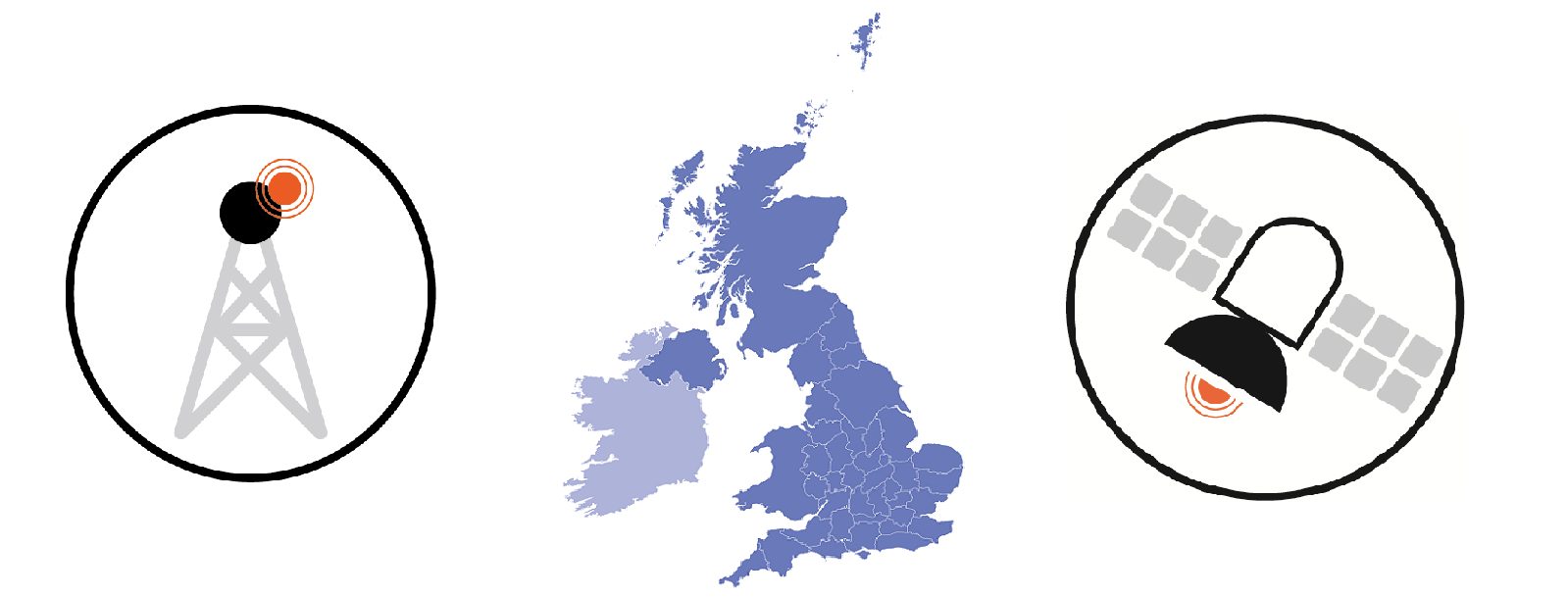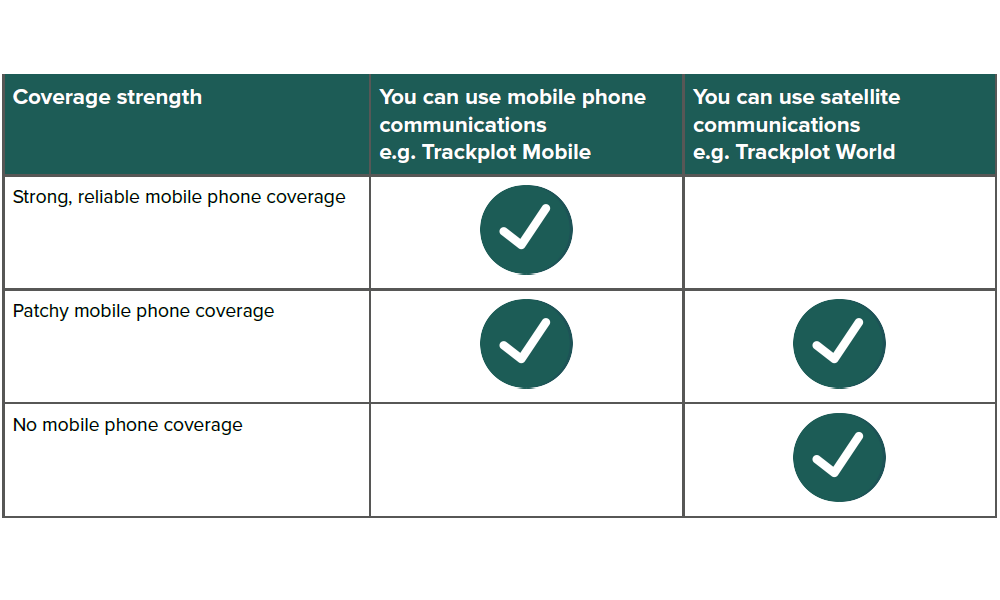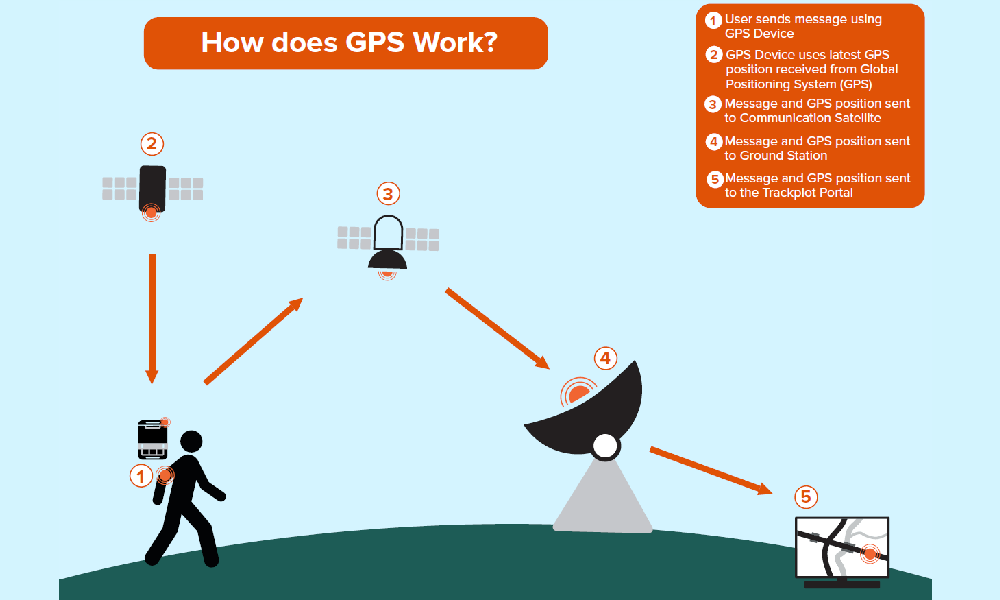Why satellite communications still have a role to play in the UK
There have been limited improvements in geographic mobile coverage over the past few years. We’ve all experienced varying strengths of mobile phone signal… poor reception can be annoying when making business or social calls but good, reliable reception is fundamental if the health and wellbeing of your workforce, particularly your lone workers, depends on it. You may need to consider satellite communications.

A survey by Which? found that the most common issues mobile phone customers have are constantly poor phone signal and continuous brief network dropouts. If any of your lone workers experience mobile phone signal problems whilst trying to advise they are safe and well then you may need to consider satellite communications for them.
Here’s a guide to explain what affects mobile phone coverage and what to consider to ensure reliable communications for your lone workers:
What is mobile phone coverage?
This is the strength of the signal that your mobile phone receives from your mobile network. This signal enables you to make calls, send and receive texts and use data, for example to send WhatsApp messages, to keep in touch.
Coverage strength determines the overall quality of reception – a strong network coverage will enable you to use your mobile phone efficiently.
Network performance
The quality of your mobile phone coverage will depend on the mobile network operator you are using. Some providers offer better coverage than others. Technical performance (speed and reliability) is influenced by the network’s physical infrastructure, the number of devices using the network and their traffic management strategies.
Coverage varies in different parts of the country, with urban areas having better coverage than rural areas. Countries and regions with high proportions of rural areas, such as Scotland, Wales and the North East of England, have the lowest 4G landmass coverage.
Factors affecting mobile phone coverage
In addition to your mobile network provider there are further factors which can affect your mobile phone signal:
1. The type of mobile phone network you have
There are 3 networks typically in use today – 3G, 4G and 5G. 1G was introduced in the 1980’s and is no longer available, 2G is no longer common as it’s data transmission is poor. 3G is available as a minimum and supports internet access but data speeds are slow and coverage can be poor. 4G is currently the most popular type of network and provides superfast internet speeds. 5G is the newest and fastest type of network and is still being rolled out across the UK.
2. The type of mobile phone you have
The age and model of your mobile phone determines if you can use a 3G, 4G or 5G network. Older mobile phones will not support the newer networks.
3. Your location
As mentioned above, mobile phone coverage varies depending on where you are in the UK. Your experience will be very different in a rural area than an urban area. This is because there are more mobile phone masts available in urban areas, and the closer you are to a mobile phone mast the stronger your coverage will be.
If you are travelling for work you will observe your signal will change as you move between areas with strong and weak mobile phone coverage. You can use a coverage checker to determine the strength of signal along your route and at your destination.
4. The environment you are in
In urban areas the built environment can negatively affect the quality of your mobile phone signal. Large buildings can obstruct a signal as can being indoors. In rural areas mountains and hills can weaken or stop your signal.
5. Weather
Poor atmospheric conditions also negatively affect signal quality – heavy rain, thunderstorms and snow can weaken or cut off your signal.
Satellite communications
If you have poor or unreliable mobile phone signal in the locations you work you should consider satellite communication as an alternative so you can keep in touch. Satellite communications do not use the mobile phone network.
What is the best method of communication for me?
Consider the above factors for each of your lone workers to establish which is the best form of communication for their health and safety:

How can Trackplot help?
Trackplot offer two different options and we can deliver a combination of both to suit your lone worker needs:
Trackplot Mobile
Trackplot Mobile uses the mobile phone network to work. The Trackplot Mobile App is integrated with the Trackplot Portal. When a lone worker Checks-in to confirm they are well, Checks-out once they have finished lone working or requests Assistance using their Mobile App their position is captured in the Trackplot Portal. This means lone workers can be located quickly if help is needed.
Trackplot World
Trackplot World uses the satellite communication network and the Global Positioning System (or GPS) which is a satellite-based navigation system. A lone worker uses a GPS Device to send Check-in, Check-out, Assistance Required and SOS messages and their position to the Trackplot Portal.

Trackplot Portal
This is the interactive online platform where you can monitor your lone workers. For each lone worker their position and their Check-in, Check-out, Assistance Required and SOS messages are captured here. Notifications are sent which raise the alarm if a lone worker needs help.
References
With thanks to Which? and the Telegraph for their informative articles on this subject.
